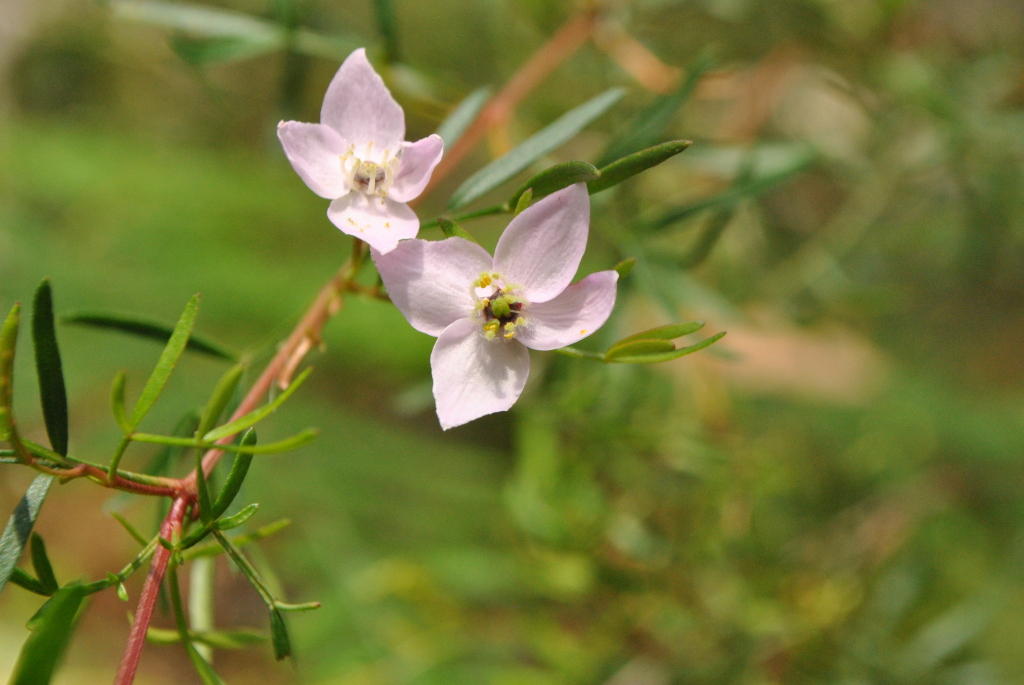Boronia muelleri
(Benth.) Cheel Forest BoroniaShrubs or small trees to 7 m high; branchlets glabrous to sparsely hairy between decurrent leaf-bases, glandular-warty. Leaves pinnate, very rarely bipinnate, with 7–17 leaflets, 45–70 mm long, 20–42 mm wide, glabrous; leaflets narrow-elliptic or oblong, slightly discolorous, 5–25 mm long, 1–4.5 mm wide (terminal leaflet shortest), acute to rounded, more or less glandular-warty, margins finely serrate; petiole 6–12 mm long. Inflorescence axillary, 1–15-flowered; pedicel 5–15 mm long. Sepals ovate-deltoid, 1.5–2.5 mm long, imbricate, glabrous or ciliate; petals 5–9 mm long, pale to deep pink or white, glabrous, imbricate, midrib not raised, deciduous; filaments sparsely pilose; style glabrous, stigma small. Follicles glabrous, 3–4 mm long; seed 2.5–3 mm long, black, shiny. Flowers spring–early autumn.
GipP, OtP, CVU, DunT, EGL, EGU, HSF, OtR, Strz. Also NSW. In Victoria principally in the east, between Buchan and the New South Wales border, with disjunct western occurrences near Labertouche and Chapple Vale. Usually occurring on coarse, granitic sands supporting heathland or heathy woodland. An isolated population at Bullengarook, Between Bacchus Marsh and Woodend doubtfully represents a natural occurrence.
Duretto, M.F. (1999). Rutaceae. In: Walsh, N.G.; Entwisle, T.J., Flora of Victoria Vol. 4, Cornaceae to Asteraceae, pp. 153–197. Inkata Press, Melbourne.
 Spinning
Spinning

